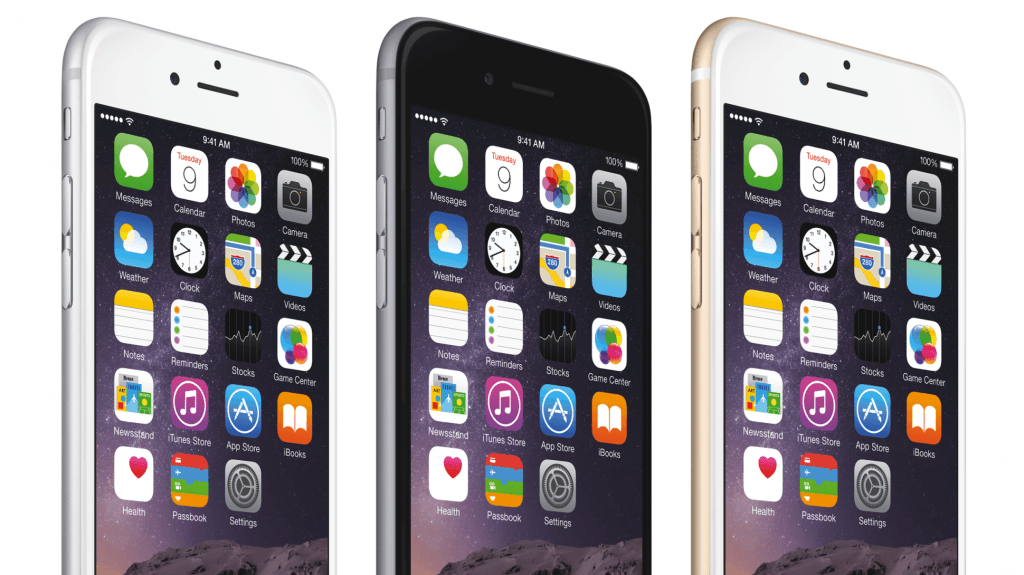Apps are getting bigger. Mobile games are now often positively gargantuan. It’s therefore time for the 16 GB iPhone to go away forever, argues Craig Grannell
As Apple unveiled the iPhone 6 in 2014, the new device got the slogan “bigger than bigger”. Unfortunately for the entry-level model, this ‘bigness’ did not extend to on-board storage. Expectations — or at least hopes — centered on Apple doubling the amount of storage for each of the newest iPhone’s three tiers; and so the iPhone 5S 16/32/64 GB options would become 32/64/128 for the iPhone 6. With apps and especially games ballooning in size, and people increasingly making use of iPhones to shoot high-quality video (which very rapidly eats up an inordinate amount of space), this seemed a no-brainer.
As the announcements were made, there was palpable disappointment in this key area. Only two of the three tiers were increased; the cheapest option for the new iPhone (for a given value of ‘cheap’ — which is ‘not very’) remained hampered with a paltry 16 GB of storage. (Even more laughably, the iPhone 5C ended up propping up the iPhone range with an absurdly tight-fisted 8 GB of space, not all of which is even available to the user.)
XCOM: Enemy Within. Also: far less storage within your 16 GB iPhone once you install it.
At the time, this seemed a clear case of upselling. For ‘only’ an extra £80 or $100, you got four times the storage for your iPhone 6 or 6 Plus. The thing is, Apple has long used a tier-model often marketed as ‘good, better, best’. Yet when interviewing Apple marketing SVP Phil Schiller, tech pundit John Gruber (of Daring Fireball fame) rightly remarked that for 16 GB, it was now “hard to make an argument that’s ‘good’ — it’s more like… ‘OK’”.
Schiller’s response was telling. He addressed the crowd, saying: “I’m guessing you’re all 128 GB users here. Me too”. He then added the iPhone’s capacity used to be lower, and so it has increased across the line. (Gruber interjected that “the iPhone didn’t used to shoot video”. But then Schiller explained one of Apple’s hopes is that as more people use cloud services, “perhaps for the most price-conscious customers, the person starting out at the beginning of the line, they don’t need globs of local storage, because these services are taking more and more of the load and making their life easier”. He argued the cost can then be put into other things, to “make sure they have a great camera and screen”.
Phil Schiller suggests price-conscious users can perhaps use iCloud services for storage and music. Most of which aren’t free. So, um, that.
The argument seems muddled. First, there’s the issue that executives earning salaries in the multiple-millions, and likely with more iCloud storage than they know what to do with, perhaps cannot empathize with someone who’d consider an iPhone purchase a one-off and extremely rare extravagance. Moreover, if someone really is a price-conscious consumer, only just able to afford an entry-level new iPhone, it seems rich to suggest they then plough a load of extra cash into cloud services, to make up for the entry-level iPhone’s inadequacies.
Then there’s that implied ‘threat’ that if Apple somehow bumped that 16 GB up to 32, the camera and screen would suddenly become inferior, which seems a bit off. The reality is Apple’s gargantuan profits would take a hit as the lower-end device became simultaneously slightly less profitable and more desirable, potentially cannibalizing some sales from the next unit up.
Will the iPhone 24 get price-points for 16 GB, 100 TB and 200 TB?
So users could do with more storage, but Apple wants more money, which seems like an impasse. What are the solutions? Most obviously, Apple could just bump up the internal storage and hope enough people will go for the higher tiers anyway. That way, customers will be happy — but investors will likely grumble. Alternatively, Apple could make iCloud significantly smarter and cheaper. If the system by default automatically saved and stored app data on uninstall and reinstated it on a reinstall, it wouldn’t make any odds if you deleted that 2 GB game you’d worked hard on for two months, or that mammoth music app you’d been composing in. You’d know on a later reinstallation, you’d get your progress and data back. (Some apps do this already, but it’s rare — especially for games. Apple would also need to bump up the miserly 5 GB of free iCloud space accordingly, otherwise everyone’s storage would fill up pretty rapidly.)
A third option is just to wait. In the future, iPhones will inevitably get more storage as 16 GB becomes untenable, and cloud storage will become cheaper, thereby offering better value for everyone. Photos and music will increasingly be stored online rather than on your device, meaning you’ll need less on-board storage for such things. But if we’ve learned anything during the lifetime of the iPhone, it’s that as storage expands, software and technology is always ready to fill it. How long will it be before we see an iOS game that simply cannot be installed on a 16 GB device?
We’re therefore hopeful Apple will ‘think different’ for the iPhone 7 (or even the 6s); and we really don’t want to be sitting here in a few years, watching Apple beaming about the iPhone 9 being able to shoot 4K video, before quietly noting the cheapest model only has 32 GB of storage, and users still only get 5 GB of free space on iCloud.

